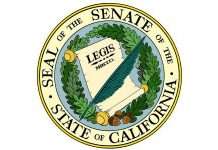
The U.S. Department of Labor (DOL) Wage and Hour Division has proposed two new rules affecting different employer regulation areas, which have not been revised meaningfully for more than 50 years.
The DOL proposed a new rule on how employers calculate an employee’s regular rate of pay for purposes of paying overtime. The department also proposed a new rule to revise and clarify the responsibilities of employers and joint employers to employees in joint-employer arrangements.
Regular Rate Requirements
Regular rate requirements define what forms of payment employers include and exclude in the “time and one-half” calculation when determining workers’ overtime rates. Overtime is paid at an employee’s regular rate of pay, which may be higher than the employee’s hourly rate because it factors in other forms of compensation the employee receives, such as commissions and production bonuses, to name a few.
The DOL’s proposal seeks to clarify what employers can properly exclude from the regular rate of pay.
The proposal identifies specific types of compensation or benefits that may be excluded from an employee’s regular rate of pay, including:
- The cost of providing wellness programs, onsite specialist treatment, gym access and fitness classes, and employee discounts on good and services;
- Payments for unused paid leave, including paid sick leave;
- Pay for time that would not otherwise qualify as “hours worked”;
- Reimbursed expenses;
- Discretionary bonuses;
- Benefit plans, including accident, unemployment and legal services; and
- Tuition programs, such as reimbursement programs or repayment of educational debt.
Find more information on the proposed rule on the DOL’s website, including Frequently Asked Questions and a Fact Sheet.
Comment now on the proposed regular rate rule! Comments received by May 28, 2019, will be considered part of the rulemaking record.
You can submit comments, identified by Regulatory Information Number (RIN) 1235-AA24, by either:
- Electronically: Submit comments through the Federal eRulemaking Portal; or
- Mail: Address written submissions to:
Division of Regulations, Legislation, and Interpretation, Wage and Hour Division
S. Department of Labor
Room S-3502, 200 Constitution Ave NW
Washington, DC 20210.
All submissions must include the agency name and RIN.
Joint-Employer Regulation
The DOL-proposed joint employer regulation would institute a clear, four-factor test — based on well-established precedent — that would consider whether the potential joint employer actually exercises the power to:
- Hire or fire the employee;
- Supervise and control the employee’s work schedules or conditions of employment;
- Determine the employee’s rate and method of payment; and
- Maintain the employee’s employment records.
The proposal also includes a set of joint employment examples that would further assist in clarifying joint-employer status.
Find more information on the proposed joint-employer status rule on the DOL’s website, including Frequently Asked Questions and a Fact Sheet.
Comment now on the proposed joint employer rule! Comments received by June 10, 2019, will be considered part of the rulemaking record.
You can submit comments, identified by Regulatory Information Number (RIN) 1235-AA26, by either:
- Electronically: Submit comments through the Federal eRulemaking Portal; or
- Mail: Address written submissions to:
Division of Regulations, Legislation, and Interpretation, Wage and Hour Division
S. Department of Labor
Room S-3502, 200 Constitution Ave NW
Washington, DC 20210.
All submissions must include the agency name and RIN.
CalChamber members can read more about “Regular Rate of Pay Defined” in Calculating Overtime in the HR Library. Not a member? See how CalChamber can help you.


